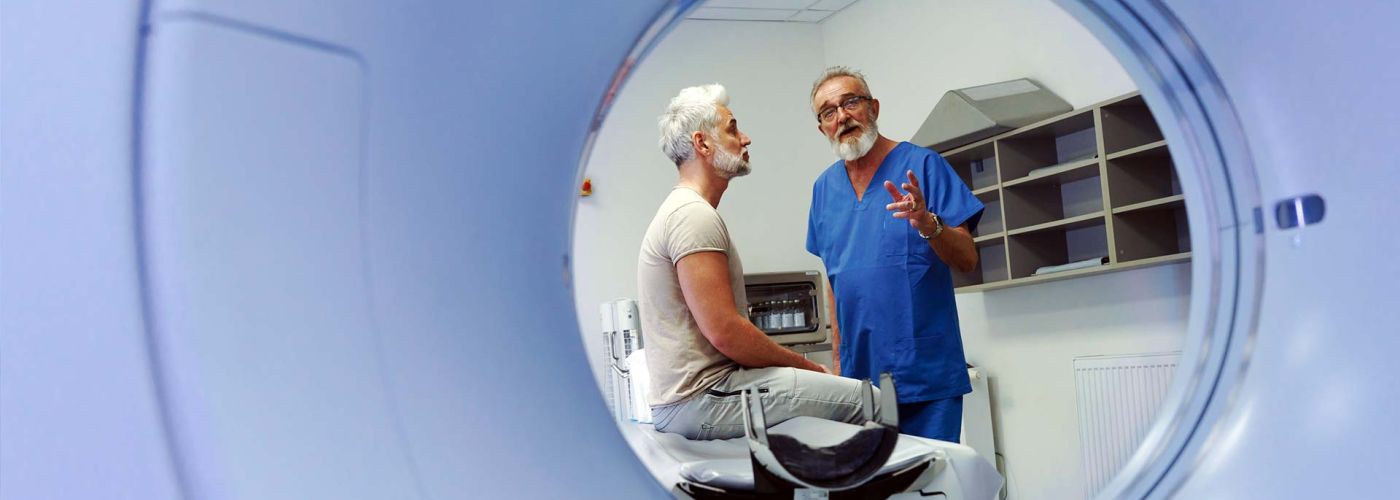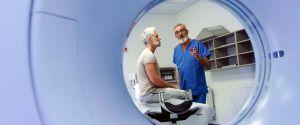In healthcare, diagnostic imaging is one of the most powerful tools for identifying disease early and guiding treatment decisions. Yet with every CT scan, MRI, or X-ray comes a critical challenge: how to ensure that all findings—especially those discovered incidentally—are documented, communicated, and followed up.
Incidental findings are common. A chest CT ordered for chest pain might reveal a lung nodule. An abdominal scan for appendicitis may uncover a breast lesion. These discoveries are clinically important, yet they often exist at the margins of workflows, where they can be easily overlooked. Research shows that missed or delayed follow-up of incidental findings is a leading source of diagnostic error, malpractice claims, and patient harm.
Artificial intelligence (AI) is now changing this equation. By automating detection, orchestrating follow-up, and closing the loop on care, AI tools validated by academic research are demonstrating measurable improvements in patient outcomes, workflow efficiency, and adherence to clinical guidelines.
This article explores how AI is reshaping incidental finding management in radiology, what academic studies reveal about its impact, and why these capabilities are becoming essential for high-reliability healthcare.
The Scope of the Problem: Missed Incidental Findings
Studies consistently show that incidental findings are overlooked or not acted upon in a significant percentage of cases. The consequences are serious. Delays in diagnosing cancers, cardiovascular disease, or infections can transform manageable conditions into advanced illness.
In malpractice analyses, failures to follow up on radiology findings are a common thread. Coverys, a medical liability insurance provider, recently reported that diagnostic errors were the most expensive malpractice category in physician offices, averaging $661,000 per claim. Many of these errors traced back to incidental findings that were documented but never pursued.
This is not simply a matter of communication. The problem is systemic:
- Radiology reports vary in how recommendations are worded.
- Findings may be buried in long narratives without standardized formatting.
- Responsibility for follow-up may be unclear across teams.
- Patients may never receive clear instructions.
- Health systems often lack mechanisms to track completion reliably.
AI tools are designed to intervene at every step of this chain, addressing precisely these points of failure.
AI Capabilities in Reporting Incidental Findings
Automated Detection
The first step in reliable follow-up is recognizing the incidental finding in the clinical record. Radiology tuned Large Language Models (LLMs) and image-recognition algorithms can now analyze radiology reports and imaging data with remarkable accuracy. Unlike manual processes or simple keyword searches, these systems can detect findings regardless of how they are described, ensuring no recommendation is missed.
Recent studies have shown LLMs achieving over 90 percent sensitivity in identifying actionable findings such as pulmonary embolisms, far surpassing traditional methods. This ability to standardize detection across report variations is central to closing follow-up gaps.
Prioritization and Flagging
Once findings are detected, AI systems can automatically classify their urgency. A potentially life-threatening abnormality is highlighted for immediate review, while less urgent findings are queued appropriately. This triage function helps prevent critical recommendations from being lost in the volume of daily reporting.
Academic research has confirmed that prioritization improves workflow efficiency, allowing radiologists and referring physicians to focus attention where it is needed most.
Comprehensive Documentation
AI also contributes to documentation by generating structured, patient-specific summaries of incidental findings. These records ensure that key details—location, size, clinical significance, and recommended follow-up—are easily accessible for providers and embedded into the patient’s longitudinal health record.
AI’s Role in Follow-Up Management
Worklist Automation
One of the most powerful applications of AI is in automating the operational side of follow-up. Findings are not only detected but entered into smart worklists that are automatically sorted by urgency, risk, and due date. Providers and care coordinators can see exactly which patients need action and when.
In some implementations, these worklists also trigger automated reminders for both clinicians and patients, reducing the risk of delay. A chest CT recommended in six months for a pulmonary nodule, for example, is automatically tracked and flagged when due.
Closed-Loop Tracking
High reliability in healthcare depends on closing the loop: ensuring every recommendation is acted upon and completed. AI-enabled platforms excel in this area, continuously monitoring whether follow-up tests are ordered, scheduled, and documented. If the loop is broken, the system alerts care teams, preventing patients from slipping through the cracks.
This closed-loop functionality is one of the most important differentiators between AI-enabled systems and traditional workflows. It moves follow-up from a fragmented process to a fully accountable one.
Adherence and Efficiency
The impact of these tools has been demonstrated in practice. Hospitals using AI for incidental pulmonary nodules, for example, have reported a 74 percent increase in completed follow-ups, significant gains in adherence to guidelines, and up to 95 percent improvements in staff efficiency. These results are achieved without adding personnel, freeing clinicians to focus on patient care rather than manual tracking.
What the Academic Evidence Shows
Academic literature strongly supports the role of AI in improving the detection and management of incidental findings.
- A review published by the Radiological Society of North America (RSNA) found that AI tools reduced time-to-diagnosis and improved detection sensitivity compared to manual review.
- Columbia University researchers demonstrated that AI-driven follow-up tracking decreased the number of patients lost to follow-up and improved adherence to national guidelines.
- A 2025 study in Health Imaging documented a 74 percent increase in adherence rates for follow-up imaging when AI-based software was deployed.
- Systematic reviews confirm that AI is especially valuable in large health systems, where sheer imaging volume makes manual tracking infeasible.
At the same time, professional guidelines emphasize that AI should complement, not replace, physician oversight.
A Narrative Example: How AI Changes the Patient Journey
Consider the story of a patient who undergoes a CT scan for abdominal pain. The scan reveals appendicitis—but also notes a small breast lesion. In traditional workflows, that incidental finding might remain buried in the report, never communicated, never tracked. Months later, a routine mammogram might reveal that the lesion has grown and metastasized, changing the patient’s prognosis entirely.
Now imagine the same scenario in an AI-enabled workflow. The LLM system identifies the breast lesion as an actionable finding. The platform automatically creates a follow-up task, sends an alert to the provider, and enters the patient into a reminder system. Within weeks, follow-up imaging is scheduled. The lesion is biopsied early, and treatment begins before the disease can spread.
This is not a theoretical improvement—it is the lived difference between a missed opportunity and a life saved.
A Framework for Safe AI Integration
While the promise of AI in radiology is immense, successful implementation depends on following best practices. Based on academic reviews and professional guidance, a safe and effective framework includes:
- Clinical validation: AI tools must be tested against large, diverse datasets and benchmarked against gold-standard methods.
- Physician oversight: Every AI-identified finding should be reviewed and confirmed by a qualified clinician.
- Workflow integration: Systems must integrate seamlessly with electronic health records (EHRs) and existing clinical processes.
- Continuous monitoring: Outcomes should be tracked to ensure ongoing accuracy and to refine performance.
- Patient-centered communication: Findings and follow-up steps should be communicated clearly to patients, building trust and engagement.
This framework ensures that AI enhances care without introducing new risks.
Why High-Reliability Follow-Up Matters
High-reliability organizations (HROs) operate with the expectation that errors are always possible and must be intercepted before harm occurs. In healthcare, this philosophy translates into building systems that are resilient, proactive, and transparent.
AI-driven incidental finding management embodies this philosophy. By anticipating points of failure, intercepting missed steps, and ensuring accountability, these tools make radiology follow-up more reliable than ever before.
The result is not only fewer missed diagnoses but also stronger patient trust, greater clinician confidence, and improved financial performance for healthcare organizations.
Looking Ahead: The Future of AI in Radiology
As imaging volumes continue to rise, incidental findings will only become more common. Manual processes alone cannot keep pace. AI offers a sustainable path forward, augmenting human expertise with scalable automation.
Future directions include:
- Agentic AI: AI that navigate patients and support provider operations while reducing the manual and administrative burden on staff.
- Predictive modeling: Tools that estimate the likelihood of disease progression from incidental findings, guiding more precise follow-up strategies.
- Population health integration: Linking incidental finding follow-up with broader chronic disease management programs.
These innovations promise not just efficiency, but a redefinition of how radiology contributes to long-term patient health.
AI as a Catalyst for Reliable Follow-Up
Incidental findings have long represented a gap in healthcare delivery—important discoveries at risk of being lost in the shuffle of busy clinical workflows. Today, AI tools are bridging that gap by automating detection, orchestrating follow-up, and ensuring every patient receives timely care.
Validated by academic research and increasingly adopted by hospitals and imaging centers, these systems are proving that technology can reduce missed care opportunities, increase adherence to guidelines, and improve efficiency without additional staff burden.
The future of radiology will not be defined solely by what is detected on a scan, but by what happens afterward. With AI, incidental findings can move from a source of risk to a driver of safety, quality, and trust.












